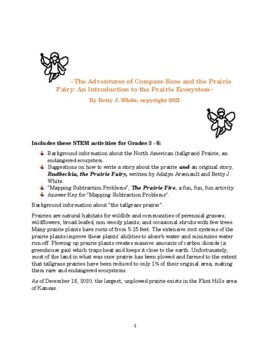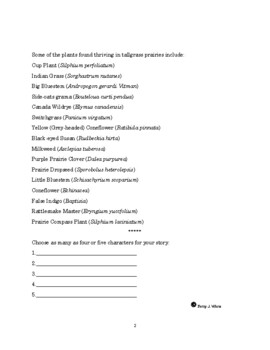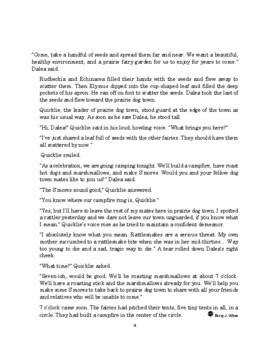The Prairie Fairy: An Introduction to the Prairie Ecosystem
Compass Rose
21 Followers
Grade Levels
3rd - 6th
Subjects
Resource Type
Standards
CCSSMP1
Formats Included
- PDF
- Easel Assessment
Pages
10 pages
Compass Rose
21 Followers
Easel Assessment Included
This resource includes a self-grading quiz students can complete on any device. Easel by TPT is free to use! Learn more.
Description
Includes these STEM activities for Grades 3 - 6:
Background information about the North American (tallgrass) Prairie, an endangered ecosystem.
Suggestions on how to write a story about the prairie and an original story, Rudbeckia, the Prairie Fairy, written by Adalyn Arsenault and Betty J. White.
“Mapping Subtraction Problems”, The Prairie Fire, a fun, fun, fun activity.
Answer Key for “Mapping Subtraction Problems”.
Total Pages
10 pages
Answer Key
Included
Teaching Duration
1 Week
Report this resource to TPT
Reported resources will be reviewed by our team. Report this resource to let us know if this resource violates TPT’s content guidelines.
Standards
to see state-specific standards (only available in the US).
CCSSMP1
Make sense of problems and persevere in solving them. Mathematically proficient students start by explaining to themselves the meaning of a problem and looking for entry points to its solution. They analyze givens, constraints, relationships, and goals. They make conjectures about the form and meaning of the solution and plan a solution pathway rather than simply jumping into a solution attempt. They consider analogous problems, and try special cases and simpler forms of the original problem in order to gain insight into its solution. They monitor and evaluate their progress and change course if necessary. Older students might, depending on the context of the problem, transform algebraic expressions or change the viewing window on their graphing calculator to get the information they need. Mathematically proficient students can explain correspondences between equations, verbal descriptions, tables, and graphs or draw diagrams of important features and relationships, graph data, and search for regularity or trends. Younger students might rely on using concrete objects or pictures to help conceptualize and solve a problem. Mathematically proficient students check their answers to problems using a different method, and they continually ask themselves, "Does this make sense?" They can understand the approaches of others to solving complex problems and identify correspondences between different approaches.






